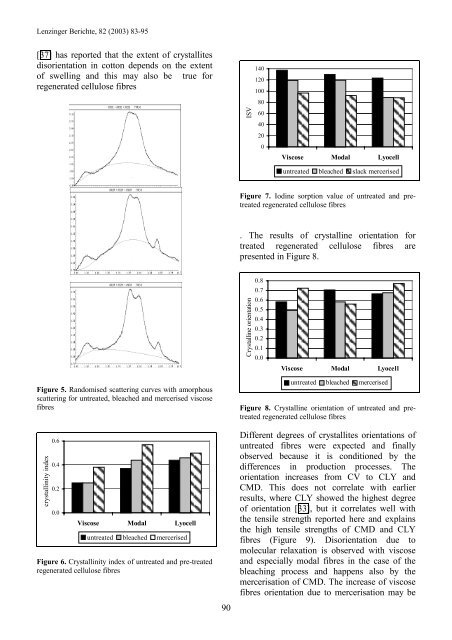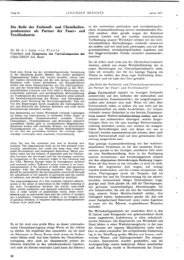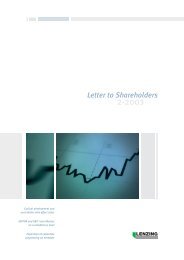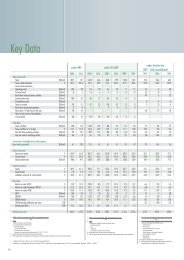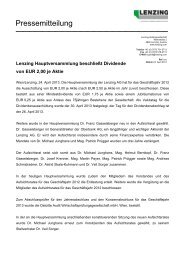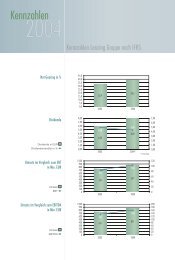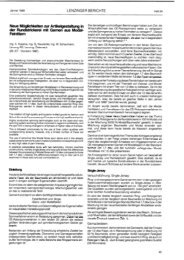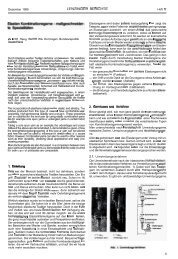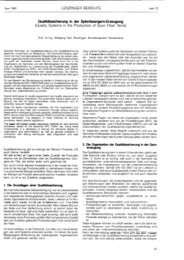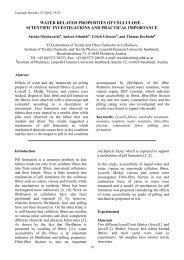Correlation of regenerated fibres morphology and surface ... - Lenzing
Correlation of regenerated fibres morphology and surface ... - Lenzing
Correlation of regenerated fibres morphology and surface ... - Lenzing
Create successful ePaper yourself
Turn your PDF publications into a flip-book with our unique Google optimized e-Paper software.
<strong>Lenzing</strong>er Berichte, 82 (2003) 83-95<br />
[37] has reported that the extent <strong>of</strong> crystallites<br />
disorientation in cotton depends on the extent<br />
<strong>of</strong> swelling <strong>and</strong> this may also be true for<br />
<strong>regenerated</strong> cellulose <strong>fibres</strong><br />
Figure 5. R<strong>and</strong>omised scattering curves with amorphous<br />
scattering for untreated, bleached <strong>and</strong> mercerised viscose<br />
<strong>fibres</strong><br />
crystallinity index<br />
0.6<br />
0.4<br />
0.2<br />
0.0<br />
Viscose Modal Lyocell<br />
untreated bleached mercerised<br />
Figure 6. Crystallinity index <strong>of</strong> untreated <strong>and</strong> pre-treated<br />
<strong>regenerated</strong> cellulose <strong>fibres</strong><br />
90<br />
ISV<br />
140<br />
120<br />
100<br />
80<br />
60<br />
40<br />
20<br />
0<br />
Viscose Modal Lyocell<br />
untreated bleached slack mercerised<br />
Figure 7. Iodine sorption value <strong>of</strong> untreated <strong>and</strong> pretreated<br />
<strong>regenerated</strong> cellulose <strong>fibres</strong><br />
. The results <strong>of</strong> crystalline orientation for<br />
treated <strong>regenerated</strong> cellulose <strong>fibres</strong> are<br />
presented in Figure 8.<br />
Crystalline orientation<br />
0.8<br />
0.7<br />
0.6<br />
0.5<br />
0.4<br />
0.3<br />
0.2<br />
0.1<br />
0.0<br />
Viscose Modal Lyocell<br />
untreated bleached mercerised<br />
Figure 8. Crystalline orientation <strong>of</strong> untreated <strong>and</strong> pretreated<br />
<strong>regenerated</strong> cellulose <strong>fibres</strong><br />
Different degrees <strong>of</strong> crystallites orientations <strong>of</strong><br />
untreated <strong>fibres</strong> were expected <strong>and</strong> finally<br />
observed because it is conditioned by the<br />
differences in production processes. The<br />
orientation increases from CV to CLY <strong>and</strong><br />
CMD. This does not correlate with earlier<br />
results, where CLY showed the highest degree<br />
<strong>of</strong> orientation [33], but it correlates well with<br />
the tensile strength reported here <strong>and</strong> explains<br />
the high tensile strengths <strong>of</strong> CMD <strong>and</strong> CLY<br />
<strong>fibres</strong> (Figure 9). Disorientation due to<br />
molecular relaxation is observed with viscose<br />
<strong>and</strong> especially modal <strong>fibres</strong> in the case <strong>of</strong> the<br />
bleaching process <strong>and</strong> happens also by the<br />
mercerisation <strong>of</strong> CMD. The increase <strong>of</strong> viscose<br />
<strong>fibres</strong> orientation due to mercerisation may be


